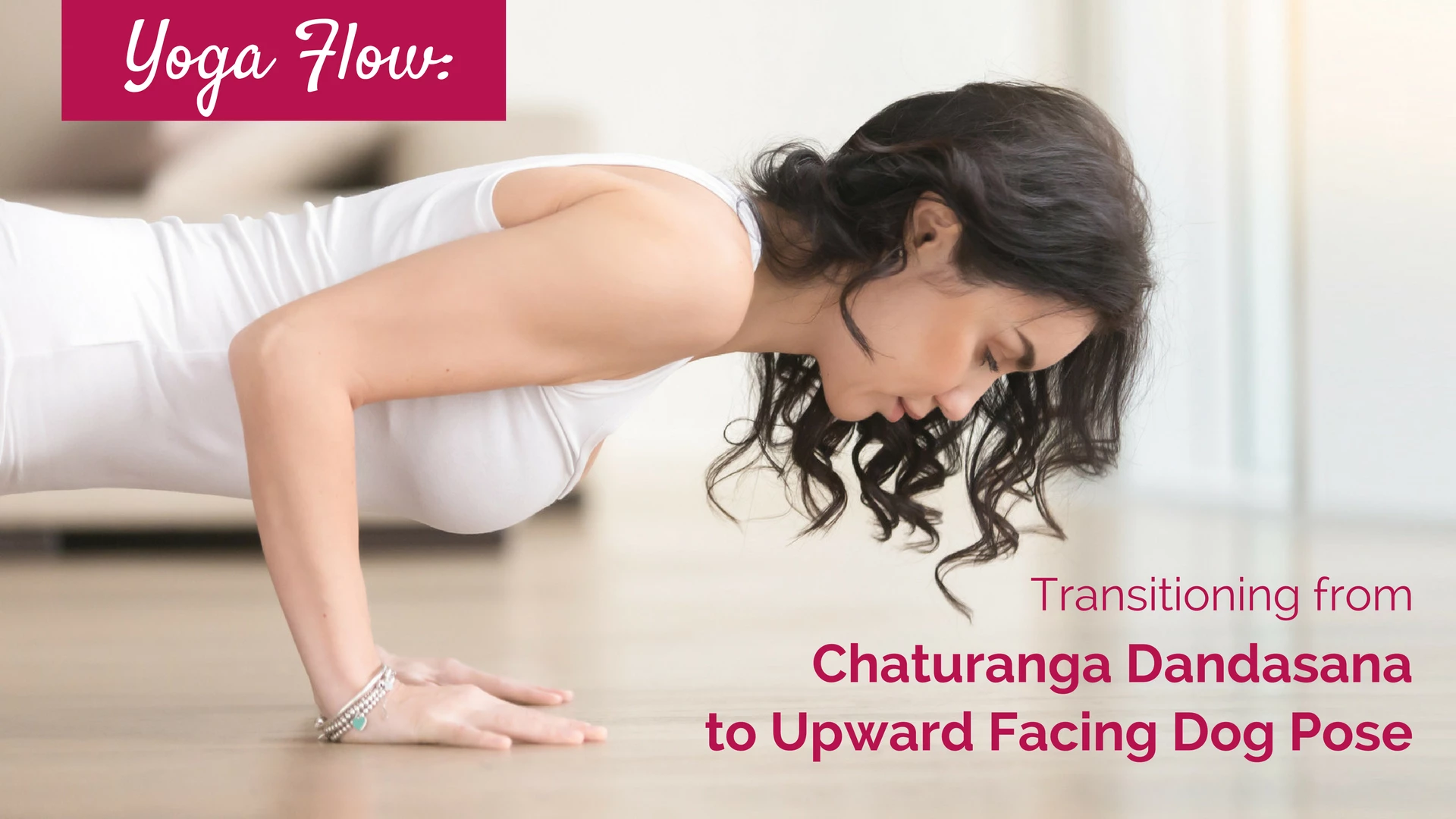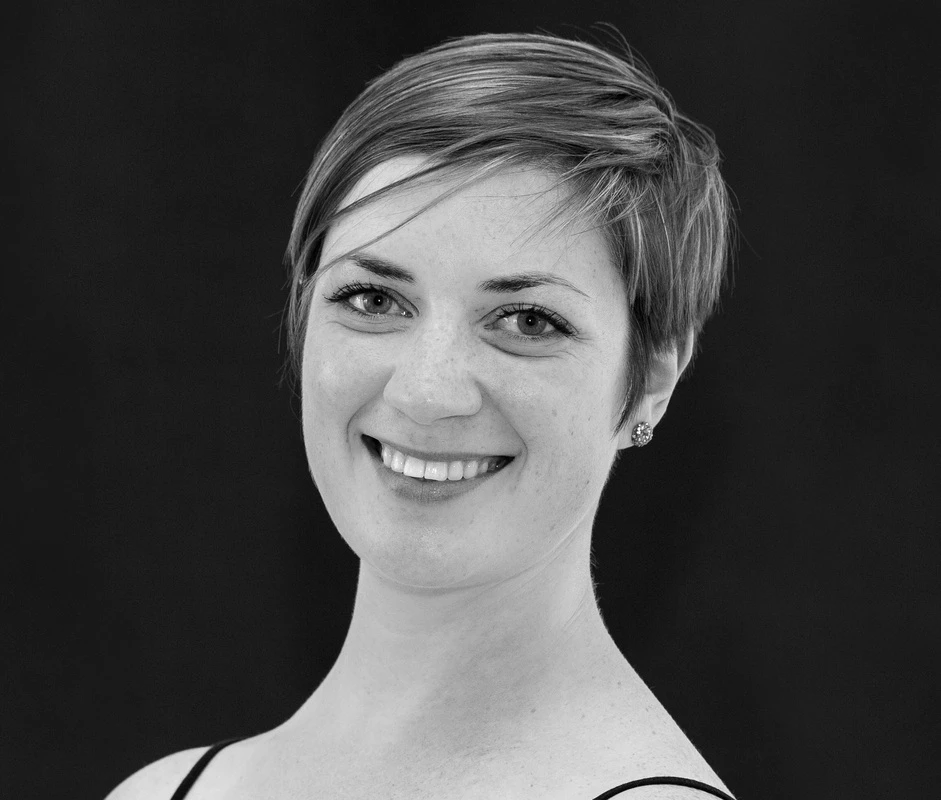Chaturanga Dandasana to Upward Facing Dog Pose: Tips For Transitioning With Ease

Article At A Glance
Does Chaturanga Dandasana intimidate you? If so, you’re not alone. This is a foundational yoga posture, but it’s so incredibly challenging! Here, we’ll cover how to smoothly transition from Chaturanga Dandasana to Upward Facing Dog Pose here. Follow these tips to go from awkward to seamless in this yoga flow.
The linking of Chaturanga Dandasana (Four-Limbed Staff Pose), Phalakasana (Plank Pose), Urdva Mukha Svanasana (Upward Facing Dog Pose), and Adho Mukha Svanasana (Downward Facing-Dog Pose) is a complex series that flow practitioners do hundreds, if not thousands, of times over the lifetime of their practice. In this post, I’ll explain the transition between Chaturanga Dandasana and Urdva Mukha Svanasana.
The goal of this transition is to align your shoulders at elbow height in Chaturanga and keep your shoulders and elbows absolutely stable while your feet move and are then set for Upward Facing Dog. This allows for the 90-degree angle required of Chaturanga to transition to the 180-degree angle that Upward Facing Dog requires without overstressing the lower back or the rotator cuff muscles.
Using Blocks With Knees Down: Learning the Transition
The easiest way to start to learn this transition is to involve our handy-dandy blocks and to utilize the support of your knees during the transition.
- Have your blocks set up on the highest height, shoulder distance apart, just in front of the hands.
- Set yourself up in Plank Pose, fingertips about an inch away from the blocks, and lower yourself down into Chaturanga Dandasana so that your shoulders can rest on the blocks.
- Keep your pelvis lifted and tailbone heavy as you tap your knees to the floor, lift the feet, point your toes, and set the tops of your feet onto the floor.
- Lift up into Upward-Facing Dog by straightening your elbows and lifting your knees and thighs off the floor. Remember this transition is about moving your feet and keeping everything else about your Plank/Chaturanga as stable and still as possible until you’re ready to move to Upward-Facing Dog.
- Take note of your blocks: did they wiggle or fall over during your transition? Try to keep them as still as possible!
Using Blocks With Knees Up: Mastering the Transition
The next step in learning this transition is to continue using the blocks to be sure the shoulders and elbows are stable in Chaturanga, but this time, keep the legs lifted and straight. This transition requires a lot more dexterity in the feet. This dexterity and intelligence start with the correct foot position in Plank Pose.
- Start in Plank Pose. Make sure the ball of the foot is on the floor. You’ll know the ball of the foot is on the floor if you are able to lift and spread your toes apart while in Plank Pose. If you aren’t on the balls of your feet, you won’t have enough power in your legs to push your feet back from the curled position into the pointed-toe position.
- When you land in Chaturanga, push backward through the balls of your feet until you come toward your toes, and then flip over onto the tops of your feet.
- Inhale up into Upward-Facing Dog.
- On the exhalation lift your hips and drag your feet in toward your hands, flipping back over the toes into Downward-Facing Dog.
Below is an overhead view of the foot transition. Note the feet are hip-distance apart, but the outer ankles stay hugged into the midline throughout (no sickling).
More Tips for Mastering the Transition from Chaturanga to Upward Facing Dog
- It’s easiest to start on a hardwood or tile floor wearing socks. Practice this transition back and forth several times so your feet/ankles get used to the feeling and you begin to build up some muscle memory. It is normal to have some cramping in the feet and/or exhaustion in the feet when you start to condition them to do this work. Take breaks, but keep at it. Practice and all is coming!
- If your feet sickle (bow out away from the midline) you are at risk of injuring the tendon that runs on the outer border of the ankle. Try this transition with a hips-distance wide (lowest height, medium width) block between the inner borders of the feet from Plank Pose through to Downward-Facing Dog, and try to keep them held in throughout the whole transition.
- Your mat matters. If it’s too thin or sticky, you will have a very hard time (thin mats curl up as you pull the feet in, and very sticky mats fight you every step of the way).
- Last note: Everyone’s skeleton is different, and this might affect whether or not this transition makes sense. I have heard that those with “goddess feet” (a second toe that is longer than the big toe) find this transition painful and sometimes impossible to do. Some practitioners get over it and are able to flip the feet despite this skeletal difference; others decide to forgo this transition and simply tap the knees down and point both feet simultaneously. Remember, it’s not about the pose (or the transition). It’s about being skillful in your choice to practice what makes sense and leave out what doesn’t.
Here’s the full transition; there are no props, just my mat and me.
Reprinted with permission from Kate-Yoga blog.
 Kate Heffernan is a Boston-based Vinyasa Flow Yoga Instructor. As a teacher, Kate is known for her ability to weave together an intelligent and well-crafted sequence that builds on a specific theme. In her Vinyasa Flow classes, students can expect to find the joy of vigorous movement married to the consciousness of precise instructions focusing on proper alignment. Kate creates a space for her students to experience their own yoga practice on any given day, whether that practice includes a more vigorous Vinyasa sequence or a cooling Yin and Restorative sequence with an extended Savasana. Kate is a lead instructor at Down Under Yoga, where she instructs public classes as well as teacher trainings. Kate was named one of Boston’s Top 20 Yoga Instructors in 2012 by RateYourBurn.com
Kate Heffernan is a Boston-based Vinyasa Flow Yoga Instructor. As a teacher, Kate is known for her ability to weave together an intelligent and well-crafted sequence that builds on a specific theme. In her Vinyasa Flow classes, students can expect to find the joy of vigorous movement married to the consciousness of precise instructions focusing on proper alignment. Kate creates a space for her students to experience their own yoga practice on any given day, whether that practice includes a more vigorous Vinyasa sequence or a cooling Yin and Restorative sequence with an extended Savasana. Kate is a lead instructor at Down Under Yoga, where she instructs public classes as well as teacher trainings. Kate was named one of Boston’s Top 20 Yoga Instructors in 2012 by RateYourBurn.com



